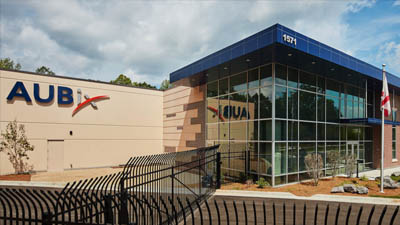 The following guest blog post has been provided by Monica Paolini, founder and principal of Senza Fili. As with all CommScope-hosted blog posts, any opinions or comments below are those of the author, and do not necessarily reflect the views of CommScope.
The following guest blog post has been provided by Monica Paolini, founder and principal of Senza Fili. As with all CommScope-hosted blog posts, any opinions or comments below are those of the author, and do not necessarily reflect the views of CommScope.
Indoor coverage has always been a challenge for wireless connectivity. Although the delivery of reliable wireless connectivity in remote and rural areas is also challenging, limited indoor coverage has a far more significant impact on revenues. While there is some regional variability, approximately 80% of cellular traffic is generated indoors. Nevertheless, indoor cellular coverage and capacity have remained limited over the years.
Cellular networks can reach indoor locations from macro stations, blasting the signal through walls and windows, but it is an expensive and spectrally inefficient way to deliver in-building connectivity. The cellular signal reaches the inner core of many large buildings weakly or not at all. As a result, cellular networks carry only 20%–30% of wireless traffic in most countries.
Most wireless traffic to mobile devices is carried over indoor Wi-Fi networks. Because Wi-Fi uses unlicensed spectrum and is widely adopted, Wi-Fi is a cost-effective choice for high-capacity traffic. Moreover, those who manage the building (residential users, enterprises, or venue owners) can easily buy, operate and control the network. But Wi-Fi alone cannot support all the indoor connectivity needs of enterprises and venues.
CLICK TO TWEET: Monica Paolini explains how new technologies and business models are shaping the future of in-building wireless and enabling new use cases.
To meet the rapidly growing need for in-building connectivity, venues and enterprises must accelerate the deployment of in-building wireless (IBW) infrastructure. Increasingly, venues and enterprises are eager to do so, as they recognize the advantages it brings. Depending on the location, IBW requires a mix of Wi‑Fi, distributed antenna systems (DAS) and small cells. New technological developments enable a much wider adoption of IBW infrastructure, and this is driven primarily by enterprises and venue owners.
Wi-Fi has led the way in terms of volume over the last 20 years. With the release of Wi-Fi 6, Wi-Fi is set to continue to be a major player covering all types of locations from large venues – such as stadiums and airports – to small offices and homes.
DAS will also continue to play a major role in providing voice and data in large venues, as it evolves to more flexible topologies better suited and more affordable for mid-sized venues.
Small cells are another solution for indoor cellular coverage. They are particularly well suited to smaller locations, where DAS is too complex and expensive, but they can also be used in large venues. To date, their adoption has been slower than expected, as most mobile operators have elected to address their indoor coverage requirements by boosting macro coverage and capacity. 5G, IoT and recent spectrum allocations for private networks make small cells affordable for enterprises and venue owners and easier for them to deploy, offering the potential to improve indoor cellular connectivity in buildings of all sizes.
The in-building market is still underserved, and much of the demand for enterprise and venue indoor connectivity is unmet. Two separate but mutually reinforcing trends – the evolution of technology and development of enterprise-driven business models – could fundamentally change the way wireless networks provide indoor connectivity by deploying more wireless infrastructure where we use it most: inside buildings.
You can read more about the impact of new technologies and business models in shaping the future of IBW and in enabling new use cases in a Senza Fili Deep Dive report sponsored by CommScope.















